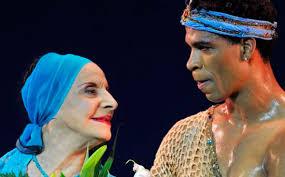
Salsa
Cuban culture encompasses a wide range of dance forms. After the colonisation of Cuba by the Spanish Kingdom, European dance forms were introduced such as the French contredanse, which gave rise to the Cuban contradanza and spawned a series of ballroom dances between the 19th and 20th centuries, including the Danzón, Mambo and Cha-cha-cha. Many of these dance elements from European dance and religious dances were fused to form the basis of Cuban technique.
Cuban music also contributed to the emergence of Latin dance styles such as salsa. Salsa is a Latin dance associated with the music genre of the same name; it is an amalgamation of Cuban dances, such as Mambo, Pachanga and Rumba, as well as American dances, such as swing and tap.
In these workshops, you will learn how to salsa through the basics of other Cuban rhythms while significantly improving your dancing skills, balance, fitness levels, coordination and flexibility.
Luanda Pau
Meet your teacher Luanda Pau: From Cuba, Luanda comes from a legendary dance family in Havana. Her mum Rosa Baquero was the artistic director and choreographer of the famous Cabaret “Parisien & Tropicana de Cuba“, and her dad is the legendary Afro-Cuban dance Maestro Domingo Pau.
Before starting her dance career, Luanda was in athletics. In 1991 she began her studies at the National School of Arts, where she remained untl 1994. Later she entered the renowned National Folkloric Ballet of Cuba (NFBC), where she danced as a soloist and principal dancer. She is a master in the role of Oya and Yemayá. She was also a solo dancer in the cabaret show at the Casino de Montecarlo in Monaco.
She graduated with a bachelor’s in cultural activities and sports & education and has an extensive history working with children and adults as an independent dance teacher.
Join the Spring Dance Club and save 43% on all tickets
Spring Dance Club Membership | One off payment of £60.00
Already a member? Log in to apply discount
Tickets
| Ticket Type | Date | Time |
|---|
What to wear & ADF studio rules:
The Cuban Dance Fusion Studio rules:
- Please remember that there will be rehearsals and another class in the studio outside your scheduled rehearsal/class, so please make sure everything is cleared away each day before leaving.
- Please don’t leave anything in the studios when you are not there.
- Attire for Salsa classes should be loose and comfortable to allow a full range of movement. We also recommend wearing ballet slippers (demi-pointe ballet shoes). Socks are not allowed. No outdoor shoes or trainers when rehearsing are to be worn in the studios. Either ballet shoes or bare feet are acceptable (unless otherwise stated).
- You cannot use any electrical equipment onsite unless our technical team has first checked it, there is equipment in the studio to play music etc.
- Please don’t put anything on the piano or the fireplace (studios 1& 2). Do not move or sit on the piano.
- No food or drink is allowed in the studios, except water in plastic bottles with a secure cap.
- No high heels are allowed.
- No smoking.
- No rosin. No talcum powder.
- When leaving, turn off all sound equipment and lights.
If you find a rehearsal area is in a condition that is cause for concern, i.e. damaged or needs cleaning, please report this to the reception or a member of the ADC staff.

